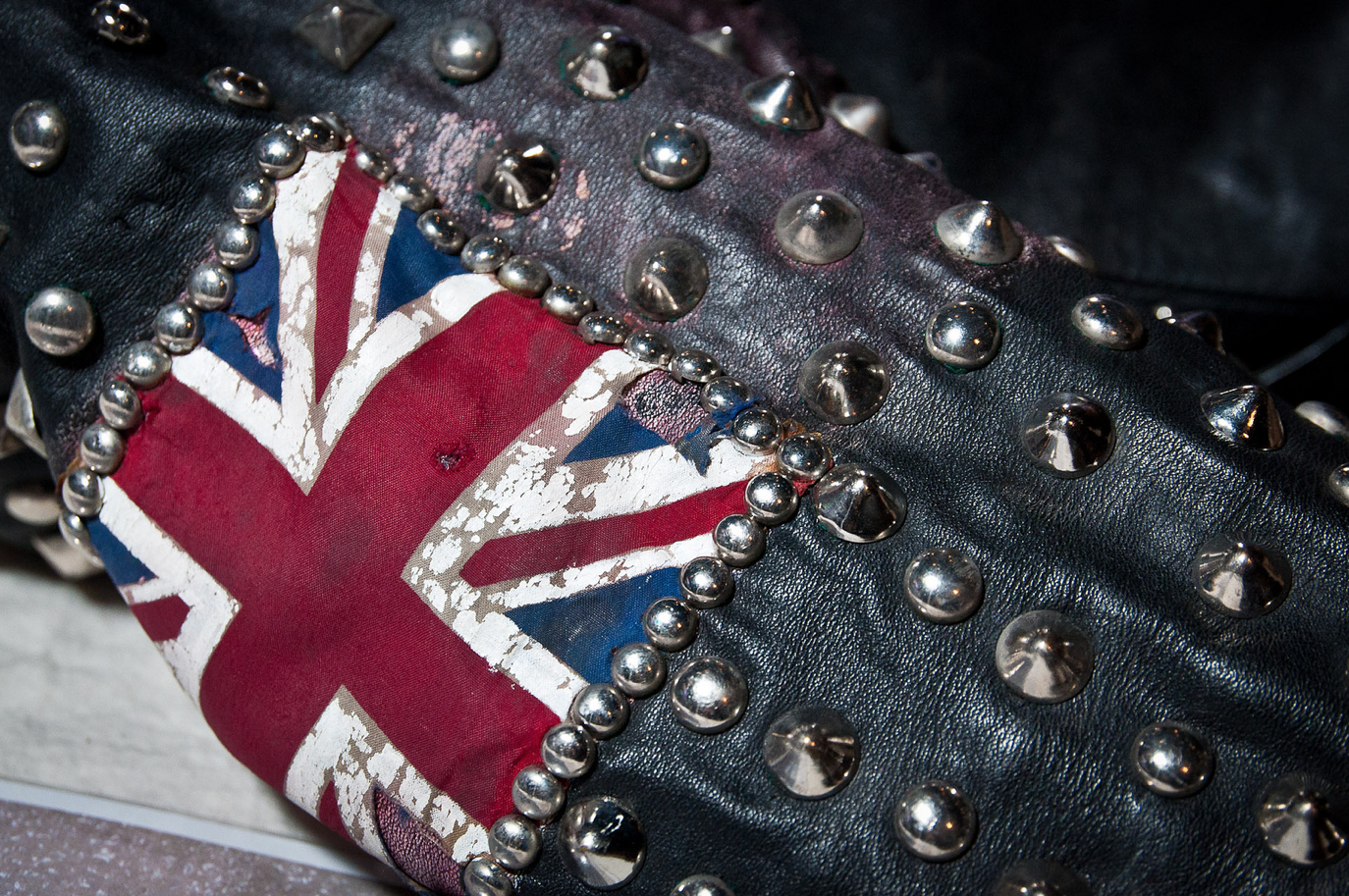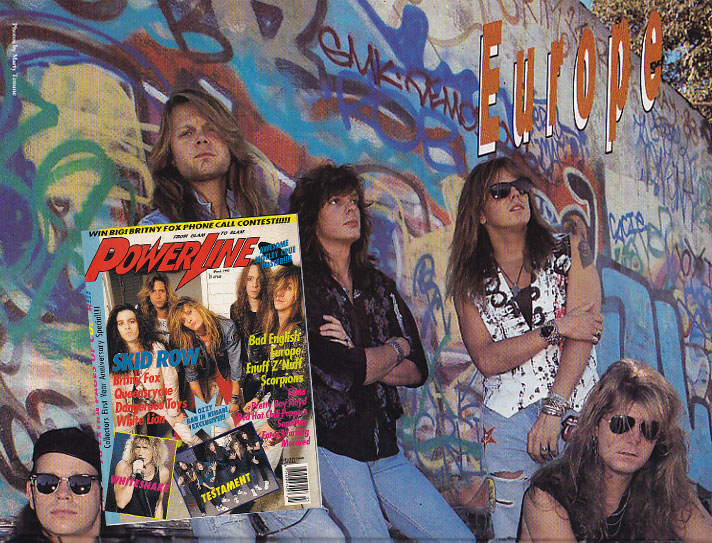The Experience Music Project is hell bent for leather this fall

There’s no more iconic item of clothing in rock ‘n’ roll than a leather jacket. But the Experience Music Project museum’s latest exhibit, Worn To Be Wild: The Black Leather Jacket, which opened on October 20 and runs through January 13, 2013, is also something of a history lesson. Yes, you see the jackets of the famous — from Elvis to Joan Jett to Arnold Schwarzenegger — but you also learn how the jacket went from being a piece of outerwear to something that signifies rebellion and a little bit of danger.
The exhibit is a joint creation of EMP and Milwaukee’s Harley-Davidson Museum, where it previously ran last summer (and negotiations are underway to take the exhibit elsewhere after it closes at EMP). It’s also, oddly enough, the first time such an exhibit has been presented. In examining the jacket’s journey from “functional to fashion,” as EMP curator Jacob McMurray puts it, the exhibit opens with a display featuring a 1920 Harley-Davidson Model “J” cycle alongside the first leather jacket they produced, from 1929. As planes, motorcycles, and even cars were open-air transportation, the jackets were made for the practical purpose of keeping you warm, and they had to be durable as they were constantly exposed to the elements.
You could say the jackets started to become “cool,” during World War 2, when they became associated with flyboy pilots, heroes of the war, who would also decorate them with emblems much the same way fans paint pictures of their favorite rockers on their jackets today. A number of these vintage WW2 jackets are featured in displays. There are also an increasing number of women’s jackets, like the “Speedway Toggs” produced by Portland, Oregon’s Langlitz Leathers (still in operation today). It at least acknowledged that women might riding a bike, even if they weren’t yet driving them; contemporaneous ads in the displays show women sitting behind the man who’s in the driver’s seat, hanging on, and smiling perkily.
And then came what McMurray and Harley-Davidson Museum curator Jim Fricke both refer to as a turning point in the history of the leather jacket — the 1953 film The Wild One. The film was based on a short story that was itself based on a real life incident, the so-called “Hollister riot,” when rival motorcycle gangs were said to have wreaked havoc in the town of Hollister, California over a July 4 weekend in 1947 (in actuality, there was no riot, and the damage inflicted by a few errant cyclists was minimal). In the film, Marlon Brando plays Johnny, leader of the Black Rebels Motorcycle Club, swaggering around in a leather jacket with the now classic look of a belt around the bottom, zippered pockets with pull tabs, a high collar, and an asymmetrical front cut, so the right lapel has to be folded over in order to zip the jacket up completely.
The attire then began to be associated with hooliganism, due in no in no small part to the moment when Johnny’s asked, “What are you rebelling against, Johnny?” “Whaddya got?” is Johnny’s surly response. Following the release of the film came the arrival of rock ‘n’ roll, and a feared rise in juvenile delinquency, with EMP’s displays featuring pulp novel covers with leather jacketed youths terrorizing decent citizens.
The jacket then enters rock ‘n’ roll fashion. You see the May 1956 cover of biker magazine The Enthusiast, showing Elvis wearing a leather jacket and sitting atop a Harley — in front of a display featuring the very jacket (purchased from J.C. Penny) and cycle in the picture (along with the ownership papers). Gene Vincent’s jacket is nearby. Both Presley and Vincent loved motorcycles, but their popularity was such that the jacket came to symbolize rock ‘n’ roll hipness as well, with jackets being worn by people who had no interest in motorcycles. This point is made by a wall display of album covers that features all kinds of artists wearing leather jackets that you wouldn’t expect — like Debbie Gibson and the Fat Boys.
But there are plenty of jackets on display by harder rocking artists. A silver jacket worn by Billy Zoom of the band X. An elaborately decorated jacket owned by Michael Jackson. A jacket owned by Rat Scabies of the Damned. A vest owned by Queensryche’s Scott Rockenfield. A jacket worn by “Derek Smalls” from Spinal Tap (which is actually cloth, done up to look like a leather jacket). The jacket Glenn Tipton, of Judas Priest, wore during the 1986 Turbo Tour; “We couldn’t have an exhibit of leather jackets without Judas Priest,” says Fricke. Just outside the exhibit area is a selection of leather jackets that you can try on yourself, with a Harley parked nearby you can climb on, so be sure to be a camera if you visit.
Another interesting thing about the leather jacket is that it’s managed to become high brow while staying low brow at the same time. The exhibit’s final displays make this dichotomy strikingly clear; you can stand at a midway point between a mock catwalk with leather creations by Jean Paul Gaultier, and an assortment of jackets owned by a private collector, painted and decorated by Seattle punks of the 1980s (“With everything from ‘Nazi Punks Funk Off’ to ‘Voodoo Child,’” McMurray notes proudly). Yes, leather jackets are now welcome on the runway. But juxtapose this high fashion item next to a jacket emblazoned with a painting of a punk vomiting and the proud description “Leather, Bristles, Studs, and Acne,” and you know that the black leather jacket will always be associated with rock ‘n’ roll cool.
For more info got to the EMP Web site.
EMP exhibit on Hendrix coming up.


